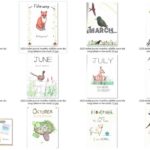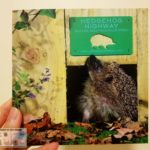Table of Contents
Stonehenge was a great place to spot some wildlife, as I was welcomed by a group of starlings (Sturnus vulgaris) and a pied wagtail (Motacilla alba).
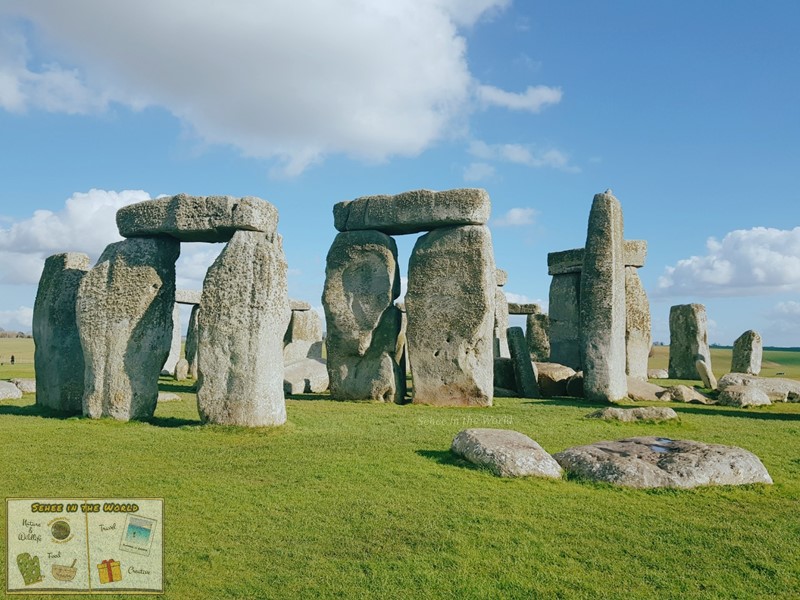
It was my second visit to Stonehenge, almost exactly a year ago. Although it was only the beginning of March, it felt as warm as my first trip in mid-summer. (Or rather, the summer visit was as chilly as March because of the strong wind blowing at Stonehenge!) In fact, in terms of photography, I took better photos this time thanks to more sunlight.
When I first visited Stonehenge 5+ years ago, I had not spotted wildlife at all. This could be due to several reasons… too many tourists in mid-summer, a different season, or maybe more likely…. I hadn’t paid attention to wildlife at Stonehenge then. But that was an old me and we’re now talking about the ‘new’ me.
The First wildlife I encountered at Stonehenge was beautiful starlings
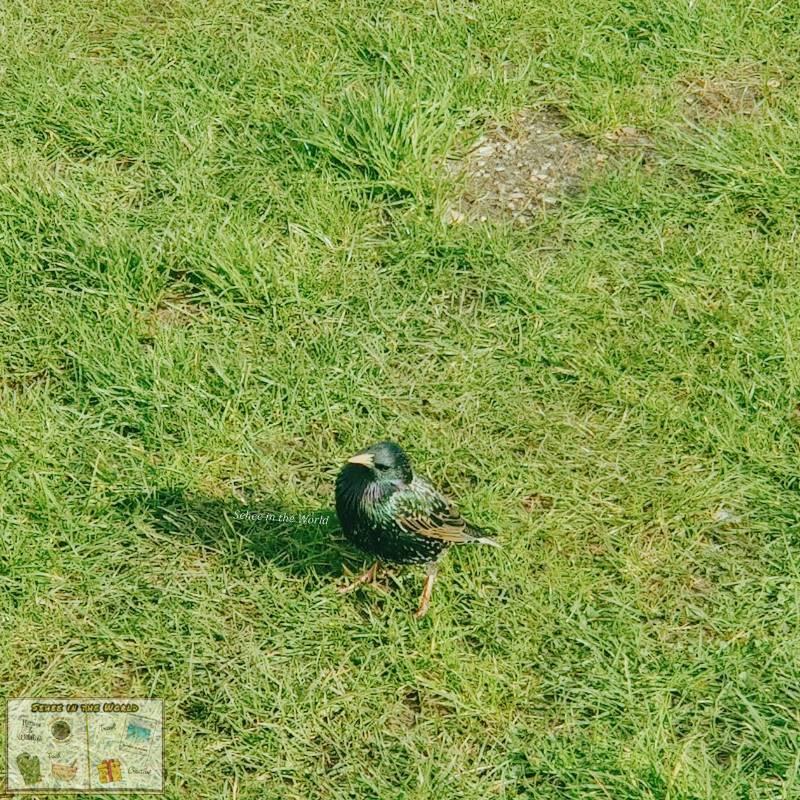
This is (common) starling, 유럽찌르레기 in Korean. I used to struggle to memorise birds’ names in Korean (and I hadn’t thought I’d work harder on it!) But since living in the UK, I’ve become more interested in nature and learning names and identifying wildlife has significantly brightened my recent days. Now, I familiarise myself with bird names in English first, matching with the spotted species, and use a translator for the Korean equivalent. (It’s amazing to realise that I have actually heard many of them in Korean but hadn’t looked up their appearance…)
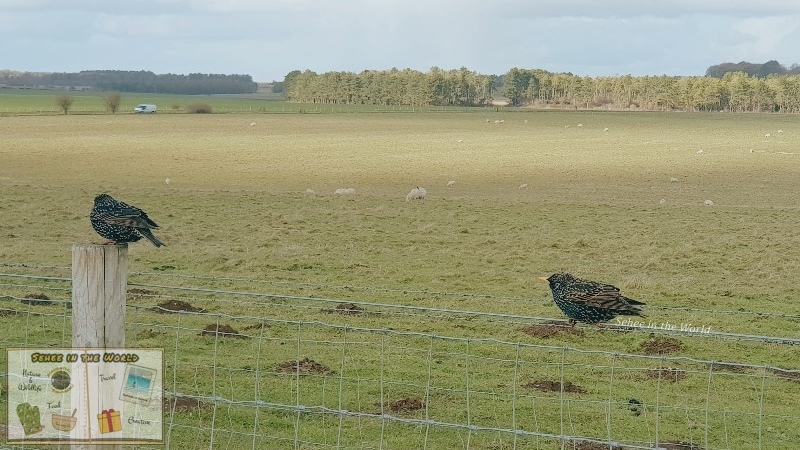
Anyhow, these starlings were fascinatingly colourful! At a first glance (especially when it was cloudy) they didn’t look that vibrant. But as soon as the light hit them, their green and purple, iridescent feathers became vivid.
More starlings were together further afield and being in a group is one of their traits. Regarding this, another impressive characteristic of the starlings is when they fly! I watched it on a YouTube video and it’d be such an overwhelming experience if I encountered the scene in person.
A pied wagtail was a showstopper!
While I couldn’t take my eyes off these starlings, like a rabbit watching a stoat’s irresistible dance, another wildlife appeared. This time, it wasn’t about colour but size and the movement – a pied wagtail (알락할미새 in Korean)!
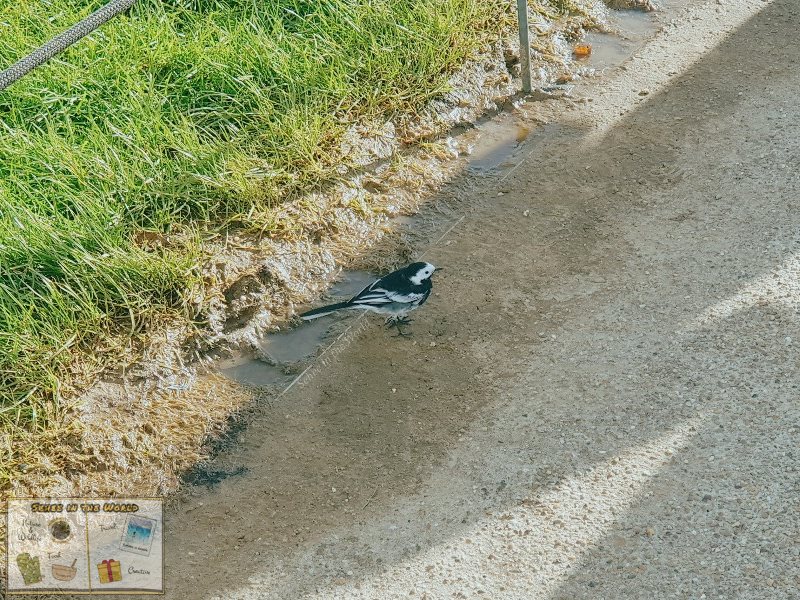
This pied wagtail seemed to have mastered a rule of ‘tourists = sources of food’. Despite few tourists, a chilly weekday on a low season, this tiny bird kept loitering. It was so small and light that it continuously got blown away by the wind, which was soooo cute… I was surprised to find out later that pied wagtail is actually heavier than a ping pong ball or a shuttlecock.
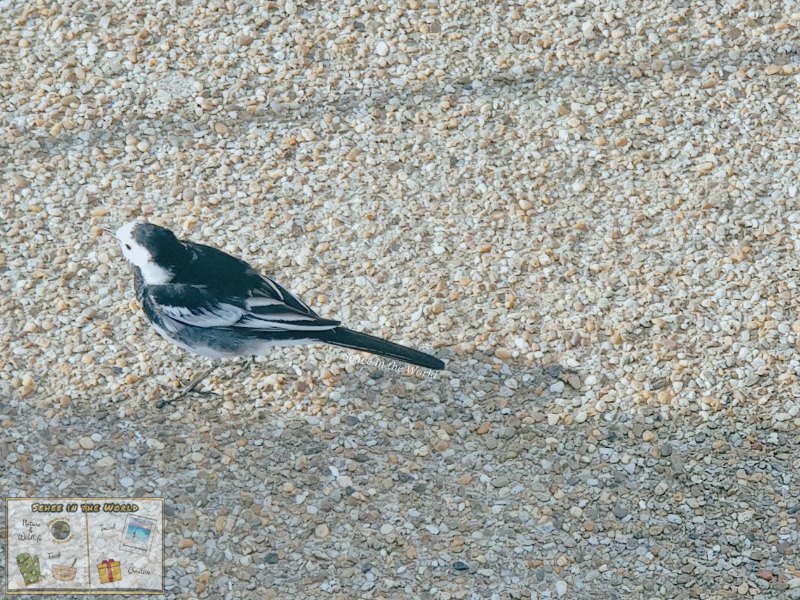
The sightings of these birds at Stonehenge got featured on my bullet journal cover for March 2020, hand-drawn illustrations under a bird theme.
As everyone knows, Stonehenge is one of the most famous tourist attractions in the UK. If anyone has a plan to visit Stonehenge (when we can!), I hope they encounter starlings and pied wagtails too. The contrast in size between Stonehenge and pied wagtails is entertaining and lovable while wandering starlings showing off glossy green and purple feathers are captivating! ✨
